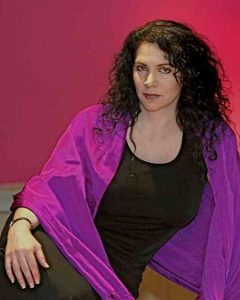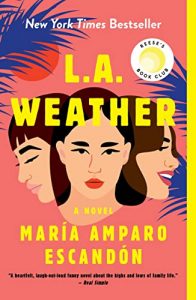On Transcreating By María Amparo Escandón
On Transcreating
By María Amparo Escandón
 I grew into my teen years in Mexico City during the seventies devouring books by Latin American authors: Julio Cortazar, Mario Benedetti, Octavio Paz, Pablo Neruda, Gabriel García Márquez. But I also explored other regions. There was one writer that I couldn’t get enough of: the Czech novelist Milan Kundera, author of The Unbearable Lightness of Being. My fascination wasn’t so much about his stories (I was too young to fully comprehend his cerebral narrative) but about the fact that he wrote in French. It puzzled me. Write in a language that was not your own? Why would anyone put themselves through such challenge? I’d been writing in Spanish since age seven, gotten my first short story published at age sixteen. My language was my comfort zone. A road I knew well. I had a built-in map.
I grew into my teen years in Mexico City during the seventies devouring books by Latin American authors: Julio Cortazar, Mario Benedetti, Octavio Paz, Pablo Neruda, Gabriel García Márquez. But I also explored other regions. There was one writer that I couldn’t get enough of: the Czech novelist Milan Kundera, author of The Unbearable Lightness of Being. My fascination wasn’t so much about his stories (I was too young to fully comprehend his cerebral narrative) but about the fact that he wrote in French. It puzzled me. Write in a language that was not your own? Why would anyone put themselves through such challenge? I’d been writing in Spanish since age seven, gotten my first short story published at age sixteen. My language was my comfort zone. A road I knew well. I had a built-in map.
Then, at twenty-three, armed with an undergraduate major in communications and a minor in linguistics and semiotics, I immigrated to Los Angeles to start an ad agency for the Latino community, Acento Advertising. At first, our clients were daytime local Latino companies: dentists, accident lawyers, driving schools. We naturally gravitated toward one another.
All our clients spoke Spanish and it was easy to communicate and sell our creative ideas to them. But as the agency grew, our client roster became composed of larger, regional and national brands, like banks, insurance companies, cars, telephone companies, utilities, all American companies finally discovering the tremendous purchasing power of my community. Their marketing teams, based all over the country, only spoke English in most cases. So, every ad we created in Spanish, whether it was for television, radio, print, or outdoor, we had to translate for the client to understand.
Pretty soon, we realized that literal translations sometimes didn’t sell well. The concepts were hard to get across to our clients, there was so much cultural nuance that was lost, so we started translating our messages conceptually, rather than literally. This exercise became known in the industry as transcreation.
I credit the nearly thirty years of writing commercials in Spanish for the Latino market, and then in English for the Anglo client, to my acquired ability to think conceptually in both languages. This has been bootcamp for my fiction writing career, a passion that I continued to nurture in parallel to my advertising life. It has served me well, but I don’t think this is a subject you graduate from and get a diploma to hang on your wall. I consider myself a perpetual student of the English language. This is why I write first in English. To learn. Then, when I transcreate into Spanish, I get to have fun. That’s when I’m at the wheel in my self-driving car.
Here’s one example in my first novel, Esperanza’s Box of Saints (Santitos in Spanish,) in which I make a slight, but meaningful, change to the narration tailored to the specific reader according to language and culture:
English:
At her husband’s funeral, she was the only one who did not cry, at least in public. Because of that, many people believed that Soledad had never really loved Alfredo, that she had married him just because he resembled the late Mexican movie idol Pedro Infante.
Spanish:
Había sido la única que no había llorado en el entierro de Alfredo, su marido, al menos en público. Por esa razón, mucha gente comentaba que Soledad en realidad nunca lo había amado y que se había casado con él sólo porque tenía un parecido irresistible a Pedro Infante.
In the English version, I explain who Pedro Infante was. The English-speaking reader learns that he’s dead, that he was Mexican, and that he was a movie idol. There’s no need for any of this in the Spanish version because everyone whose language is Spanish knows who Pedro Infante was. If I’d kept the translation unaltered, or untranscreated, it would be similar to explaining the American reader who Elvis Presley was, giving away the fact that what was being read was a translation with no cultural regard. Then, I went a little further in the Spanish version by describing Alfredo’s resemblance to Pedro Infante as irresistible.
I did end up understanding the challenge of writing in a language that isn’t mine. For me, writing in English has been a thrill. Every word counts. I must take my time to compose a sentence. I need to articulate every paragraph with utmost care, considering so many aspects of the English language and culture that don’t come naturally to me. As the years go by, I do feel more comfortable, more at ease. Words just flow. Someone said to me once, “You can consider yourself bilingual when you start dreaming in English.” But I think the turning point for me was much later, after I finished writing my second novel, González & Daughter Trucking Co. (Transportes González e Hija, S.A.)
I’ll never know why Milan Kundera, who translates his work in French into Czech, his native language, decided to embark on that adventure, but his choice did plant a seed of curiosity in me. And here I am all these years later—dreaming (and writing) in English.
—
María Amparo Escandón is a New York Times best-selling bilingual author (English and Spanish.) Her third novel, L.A. Weather, published by Flatiron Books, a division of Macmillan Publishers is a Reese’s Book Club pick and was featured in Oprah Quarterly as well as a Best Book of the Month in Barnes & Noble, Alta, People, PopSugar, Bustle, CNN, E! News, Ms. Magazine, Nylon, GMA, and more.
L.A. WEATHER
 AN INSTANT NEW YORK TIMES BESTSELLER • REESE’S BOOK CLUB PICK • 2022 INTERNATIONAL LATINO BOOK AWARD WINNER FOR FICTION
AN INSTANT NEW YORK TIMES BESTSELLER • REESE’S BOOK CLUB PICK • 2022 INTERNATIONAL LATINO BOOK AWARD WINNER FOR FICTION
FORECAST: Storm clouds are on the horizon in L.A. Weather, a fun, fast-paced novel of a Mexican American family from the author of the #1 Los Angeles Times bestseller Esperanza’s Box of Saints.
“There’s a 100% chance you’ll be paging through this book to uncover the secrets and deception that could potentially burn everything down!”—Reese Witherspoon
“This is by far one of the most endearing L.A. novels in recent memory.” —Publishers Weekly (starred review)
“A lively and ambitious family novel.”—New York Times Book Review
Oscar, the weather-obsessed patriarch of the Alvarado family, desperately wants a little rain. L.A. is parched, dry as a bone, and he’s harboring a costly secret that distracts him from everything else. His wife, Keila, desperate for a life with a little more intimacy and a little less Weather Channel, feels she has no choice but to end their marriage.
Their three daughters—Claudia, a television chef with a hard-hearted attitude; Olivia, a successful architect who suffers from gentrification guilt; and Patricia, a social media wizard who has an uncanny knack for connecting with audiences but not with her lovers—are left questioning everything they know. Each will have to take a critical look at her own relationships and make some tough decisions along the way.
With quick wit and humor, María Amparo Escandón follows the Alvarado family as they wrestle with impending evacuations, secrets, deception, and betrayal, and their toughest decision yet: whether to stick together or burn it all down.
BUY HERE
Category: How To and Tips
























